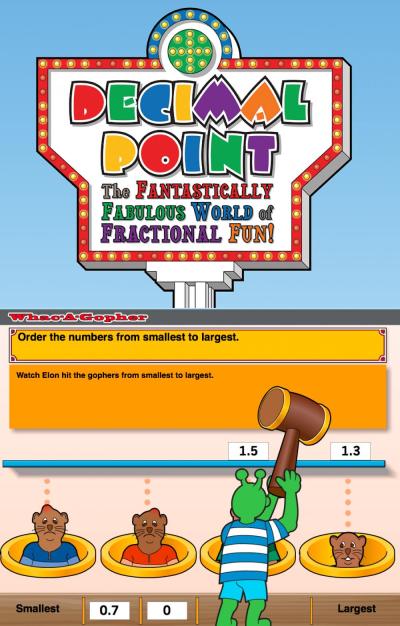Decimal Game Helps Kids Get the Point

Kids may not always want to do their math homework, but they can’t seem to put down video games like Minecraft or Angry Birds. A new project from researchers in Carnegie Mellon’s Human-Computer Interaction Institute attempts to harness the excitement middle school students feel for videogames and channel it into an opportunity to increase their math skills by developing educational games — a promising new research area that explores learning and motivational benefits.
HCII faculty members Jodi Forlizzi and Bruce McLaren are working with designer Rick Henkel and student programmers Patrick McLaren and Kevin Dou to prove that these educational games can motivate students and help them learn if they’re iteratively designed with the students’ needs, wants and tastes in mind. (Former project members include Craig Ganoe, John Choi, Jimit Bhalani, Grace Kihumba and Kimberly Lister.)
To prove their hypothesis, Forlizzi and McLaren’s team created “Decimal Point, the Fantastically Fabulous World of Fractional Fun,” to help students learn about decimals — a difficult subject to master, and one that even adults struggle with. In the game, players move through an amusement park-themed world, solving mini-games that cover common misconceptions about decimals. In the Whac-a-Gopher mini-game, for example, each gopher corresponds to a number that includes a decimal. Players need to whack the gophers in order from the smallest to largest number. In another game, players must complete a “what comes next?” pattern for a Ferris wheel to run.
While the game can progress in direct-play mode, it also offers a mode developed around erroneous examples. This instructional technique for teaching math provides step-by-step examples of how to solve problems but also includes one or more incorrect steps that the player has to find and fix. A student playing Decimal Point in erroneous example mode encounters characters that try to solve the mini-game problems, but make mistakes.
For example, the player encounters a character in the game that has to solve a math problem to quench a parched vampire’s thirst. The character must add two decimal-containing numbers together to find the perfect amount of blood, but succumbs to a common misconception and forgets to carry a one from the tenths to the ones place. The player then steps in, answers a multiple-choice question about what the character is doing wrong, and fixes the character’s mistake. Then, and only then, will the vampire be satisfied.
"Erroneous examples seem like a perfect fit for an educational game,” McLaren said. “The task of finding, fixing and explaining errors, as our student players are prompted to do, has a very game-like quality to it."
While not yet in its final form, Decimal Point has undergone and continues to undergo rigorous testing. The team first conducted a competitive analysis of games for education and fun designed for kids ages 11 to 13. Using this data, they developed a few design concepts, which they shared with 32 sixth-graders in two Pittsburgh-area schools. The students spent two, 21-minute sessions talking about what makes a game fun and providing feedback on the game concepts. Based on their feedback, the Forlizzi and McLaren team developed the amusement park theme and mapped the erroneous example problems to the game design. The next stage will involve playtesting the prototype with middle school students to determine if the game creates the experience that the design team intended, and is free of significant usability problems.
And, of course, they want to make sure it’s fun.

